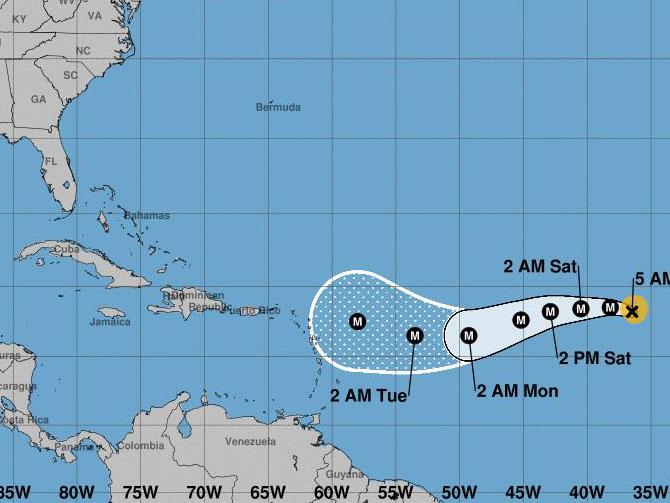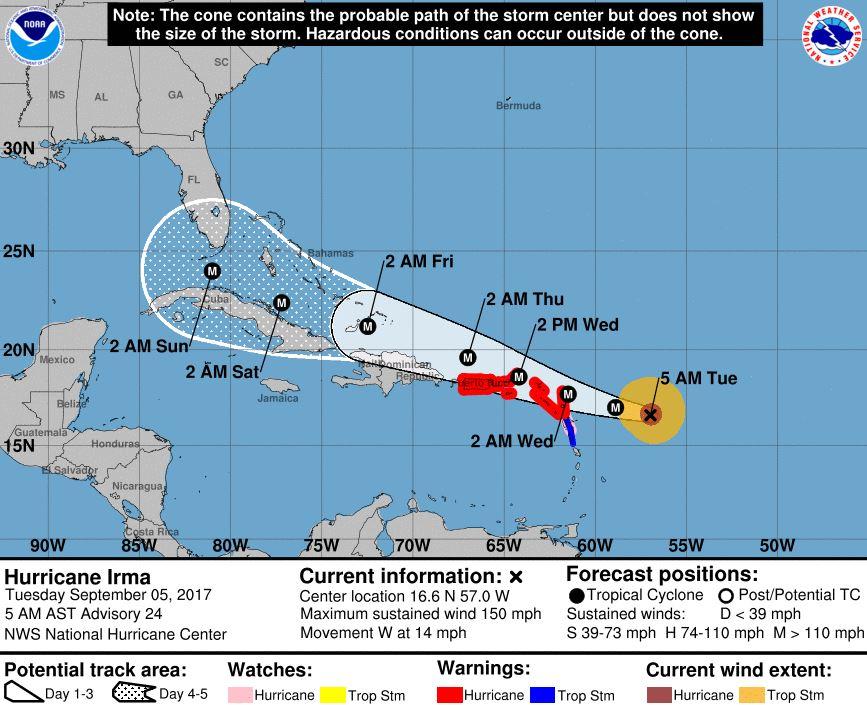Hurricane Irma: Another extremely dangerous storm is heading towards US Gulf Coast reeling from Harvey
Irma's winds expected to reach 150mph

Your support helps us to tell the story
From reproductive rights to climate change to Big Tech, The Independent is on the ground when the story is developing. Whether it's investigating the financials of Elon Musk's pro-Trump PAC or producing our latest documentary, 'The A Word', which shines a light on the American women fighting for reproductive rights, we know how important it is to parse out the facts from the messaging.
At such a critical moment in US history, we need reporters on the ground. Your donation allows us to keep sending journalists to speak to both sides of the story.
The Independent is trusted by Americans across the entire political spectrum. And unlike many other quality news outlets, we choose not to lock Americans out of our reporting and analysis with paywalls. We believe quality journalism should be available to everyone, paid for by those who can afford it.
Your support makes all the difference.Hurricane Irma is racing towards the Caribbean and the southern United States as residents in its path brace for possible life-threatening winds and flooding.
Warnings were in place for parts of the Leeward Islands, the British and US Virgin Islands and Puerto Rico, in preparation for the intensifying storm, which according to the US National Hurricane Center (NHC) has winds reaching up to 150 mph.
“Dangerous Hurricane Irma heading for the Leeward Islands,” the centre said. “Preparations should be rushed to completion as tropical storm-force winds are expected to arrive in the hurricane warning area by late Tuesday.”
A Category 4 hurricane means sustained winds of 130-156 mph with “catastrophic” outcomes, including major structural damage to buildings.
Roofs, trees and other heavy objects are at risk of being lifted by the storm and falling on people.
In preparation for the storm, the government of Puerto Rico declared a state of emergency. Around 3.4 million people live in the US territory, which has a fragile economy. Only 456 emergency shelters have been opened, enough to house 62,100 people.
As frantic residents stockpiled emergency supplies, the Government froze prices on necessities, including food and water, medicines, power generators and batteries.

The executive director of the state power authority, Ricardo Ramos, told the Telemundo TV station that the power grid was so vulnerable from lack of investment that parts of the territory could be without power for three to four months.
“We’re preparing for the worst-case scenario,” he said.
Irma also threatens the US East Coast and Florida, which has declared a state of emergency. The hurricane centre expects Irma to reach southern Florida by the weekend.
Florida Governor Rick Scott said on Twitter that he had spoken to US President Donald Trump, who he said “offered the full resources of the federal government as Floridians prepare for Hurricane Irma.”
The NHC cautioned that it was too early to forecast the storm’s exact path or what effects it might have on the continental United States, but warned of likely effects to hit some areas by later this week.
“There is an increasing chance of seeing some impacts from Irma in the Florida Peninsula and the Florida Keys later this week and this weekend. In addition, rough surf and dangerous marine conditions will begin to affect the southeastern US coast by later this week,” the centre said.
Irma will be the second powerful hurricane to thrash the United States and its territories in as many weeks.
Residents of Texas and Louisiana are still reeling from the catastrophic effects of Hurricane Harvey, which struck Texas as a Category 4 hurricane on 25 August and dumped several feet of rain, destroying thousands of homes and businesses.
Reuters contributed to this report
Subscribe to Independent Premium to bookmark this article
Want to bookmark your favourite articles and stories to read or reference later? Start your Independent Premium subscription today.
Join our commenting forum
Join thought-provoking conversations, follow other Independent readers and see their replies
Comments